Curious about Rome’s SUPER ticket? This guide simplifies the process, detailing how to buy and use this exclusive pass. I also provide a glimpse into the incredible attractions accessible with it.
The SUPER ticket is your key to extraordinary, often restricted archaeological wonders on Palatine Hill and the Roman Forum. Many of these sites are newly opened, offering a fresh perspective on Rome’s hidden treasures.
SUPER means “Seven Unique Places to Experience in Rome.” With it, you’ll have fast-track entry to eight remarkable locations.
You can’t visit these sites with the regular trifecta ticket or tour covering the Colosseum, the Roman Forum, and the Palatine Hill. You can ONLY visit them with a SUPER pass.
There are no individual ticket available for purchase. And you’ll have to scan the pass at each site. I think they are all well worth visiting in any event.
Bottom line: the SUPER pass is a super value for some super sites in Rome.
Allora, let’s get down to details.
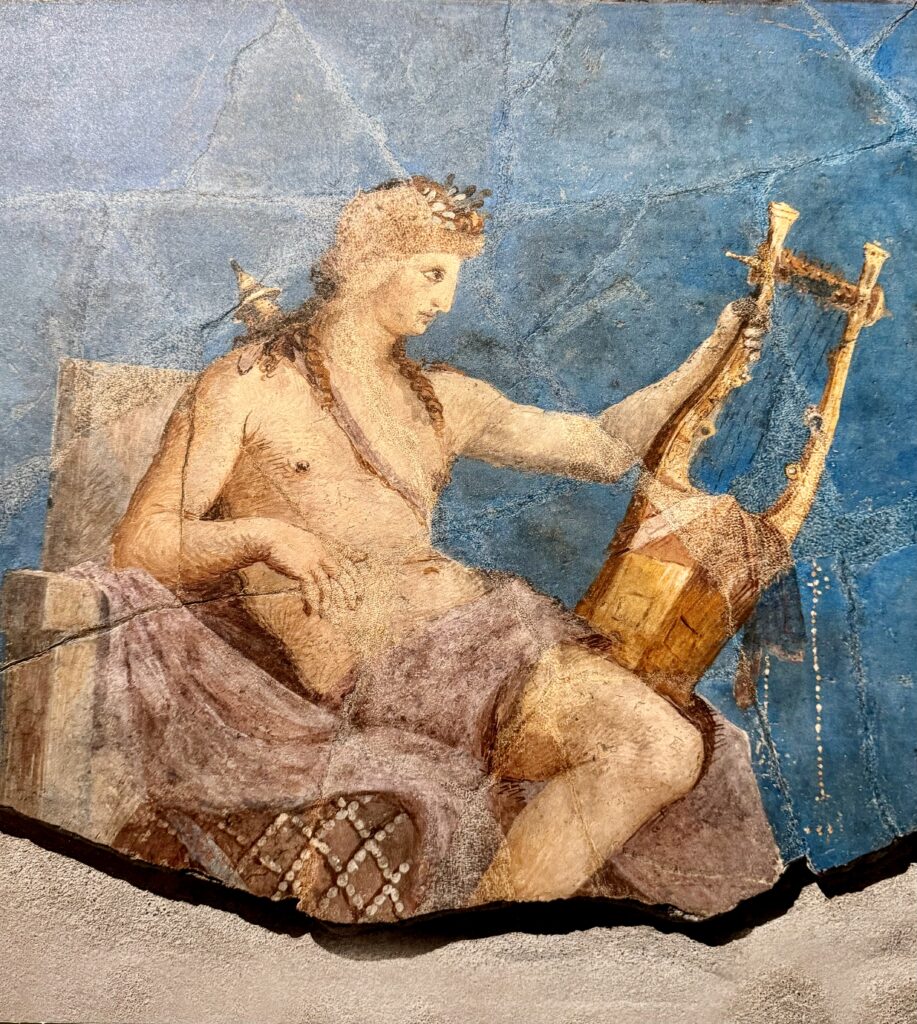
Guide To The SUPER Ticket
What is the SUPER Pass?
The SUPER ticket is a themed skip the line ticket. It allows a single access to 8 special archaeological sites:
- Domus Transitoria
- House of Augustus
- House of Livia
- Aula Isaac/Loggia Mattei
- Palatine Museum
- Neronian Cryptoporticus
- Temple of Romulus
- Santa Maria Antiqua Church
Currently, the House of Livia and Domus Transitoria are closed, hopefully reopening in the near future.
These ancient sites were previously only accessible via a private guided tour. They’re now open to the public, but on a limited basis. They contain precious paintings, frescos, marble, and sculptures and can’t accommodate large groups.
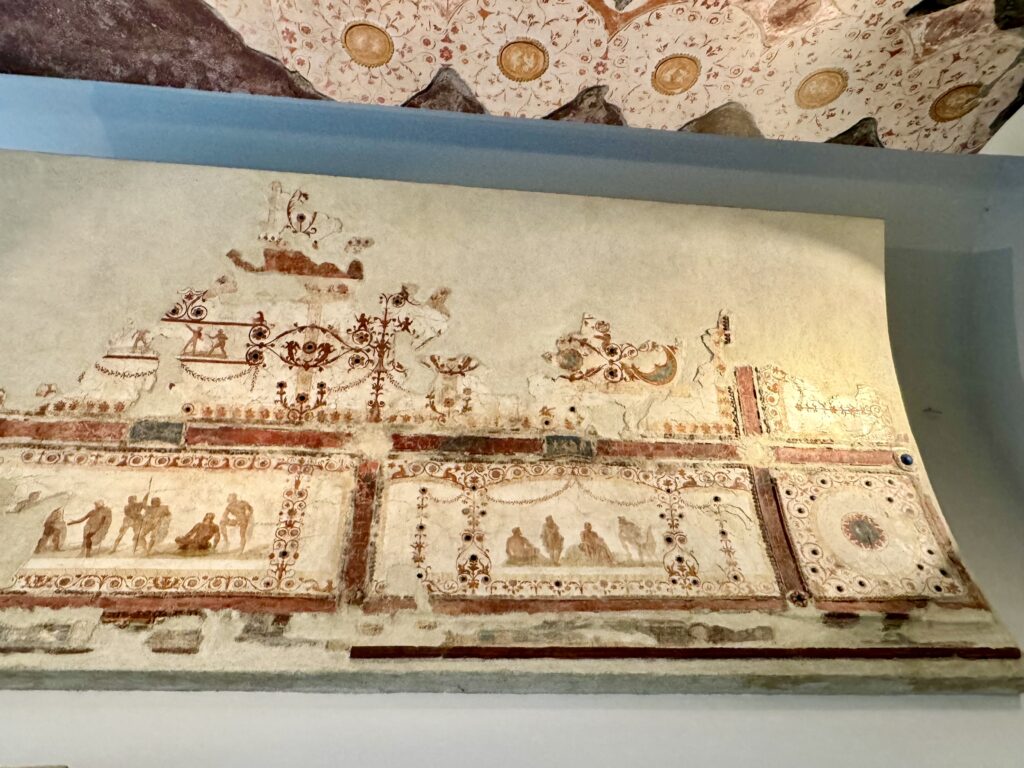
How To Buy The SUPER Ticket
You can buy the SUPER Pass at a ticket office at the Colosseum or Palatine Hill entrances. But there likely will be a massive line.
It’s vastly easier to buy the SUPER pass online on the Coop Culture website. But you have two options.
Option 1:
First, you can buy the pass as a stand alone ticket online via Coop Culture. It gives you entry to the Colosseum, Roman Forum, Palatine Hill, and the 8 additional SUPER sites.
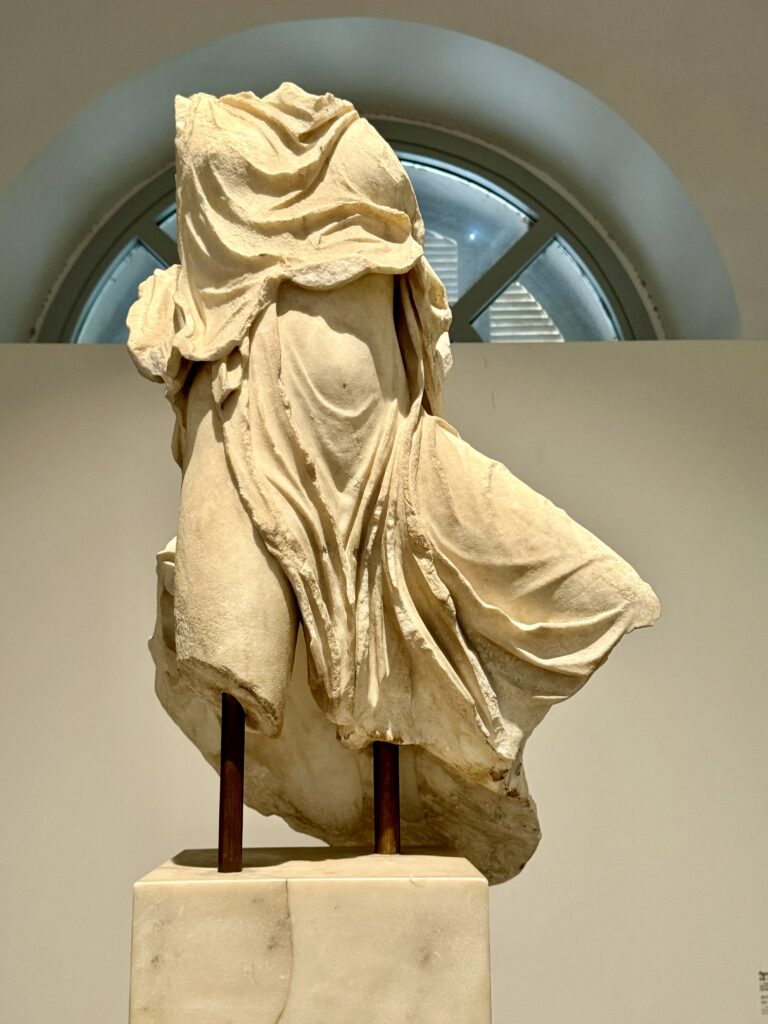
You have one day to use this SUPER pass. As with the regular trifecta ticket, you can only enter the Roman Forum or the Palatine Hill once. And both of those places have to be visited on the same visit.
If you exit the Roman Forum, you won’t be able to access the Palatine Hill later (or vice versa). So you need to plan accordingly.
Once you’ve purchased the ticket, you’ll get an email with a voucher to scan.
Please note that a reservation to visit the Colosseum has to be made separately. As of March 2019, you can no longer visit the Colosseum without a reservation.
There’s an online reservation fee of 2 euros. As you might guess, the slots go very quickly.
Option 2:
The second option, especially if the official ticket is sold out on the Coop Culture site, is to buy a ticket on Viator, a third party seller. Put the Viator app on your phone for easy access to your booking.
I bought the “Roman Forum ticket” I linked. At first glance, you can’t tell that it covers the SUPER sites, but it does.
You book the ticket and initially get a voucher. This is replaced 24-48 hours before your selected visit date with a new voucher. You have to click to download the PDF of the voucher.
That will bring up the “ticket.” Click on the ticket icon to open and then scan the QR code at the entry to the Roman Forum at Via della Salara Vecchia, 5/6.
Tip: I bring this process up because some people have had trouble accessing their ticket. I didn’t at all when I visited, but some clicking is involved.
What Sites Can You Visit With The SUPER Ticket?
Here my rubdown of the sites you can visit with the SUPER Pass.
They’re all worthwhile. My favorites were the Houses of Augustus, Santa Maria Antiqua, and Domus Tiberiana — which just opened in September 2023!
They’re not all always open, so check online in advance.
Pro Tip: When you enter the Roman Forum to begin, you now have three checkpoints. The guard will scan your ticket, another will match it to your ID, and then you have go through a metal detector.
1. Nero’s Domus Transitoria
Before there was Domus Aurea, there was Domus Transitoria. The Emperor Nero’s first palace was built between 60 and 64 BC. The palace had a short life.
It was destroyed in the great fire of Rome in 64 BC. This was the fire that prompted the saying that “Nero fiddled while Rome burned.”
Like Domus Aurea, Domus Transitoria was a massive and lavishly decorated palace, connecting the Palatine Hill and Esquiline Hill. It was dubbed the Transit House.
According to the historian Seutonius, Domus Transitoria had all the pomp, gold, and luxury one typically associates with grandiose Neronian architecture.
Domus Transitoria just opened to the public in April 2019. You enter and descend a staircase to inspect the site underground. Virtual reality headsets bring the dank place to life, allowing visitors to see vignettes of the palace in its former glory.
This site is currently closed. It was supposed to re-open in November 2023. But further restoration is still ongoing.
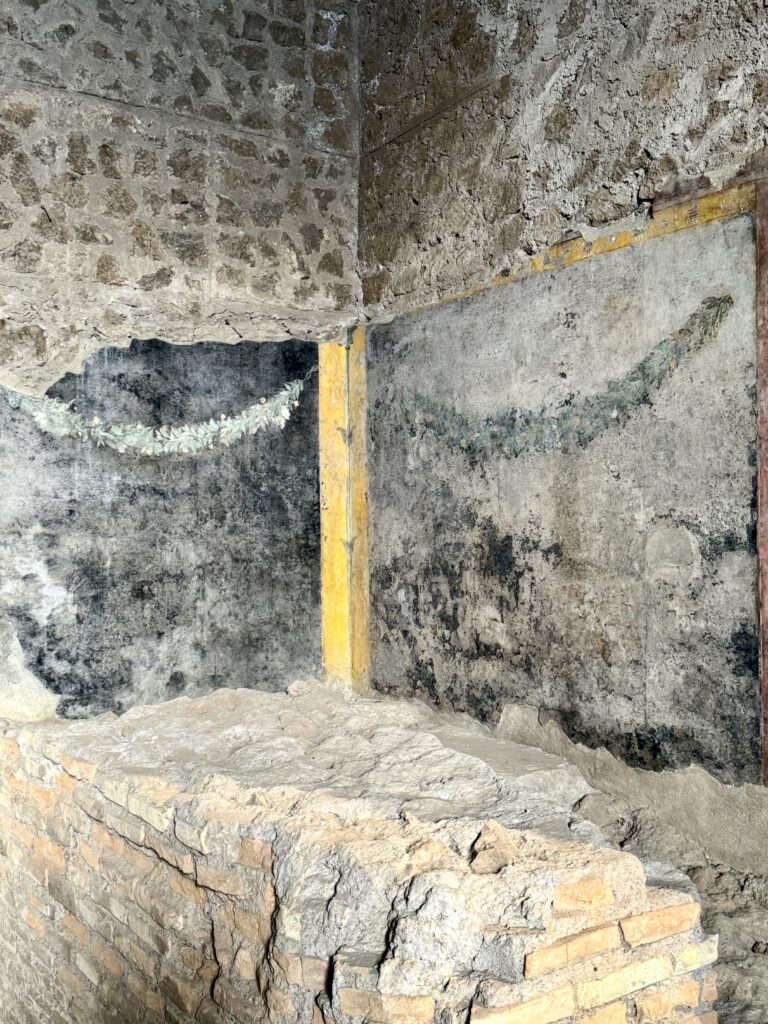
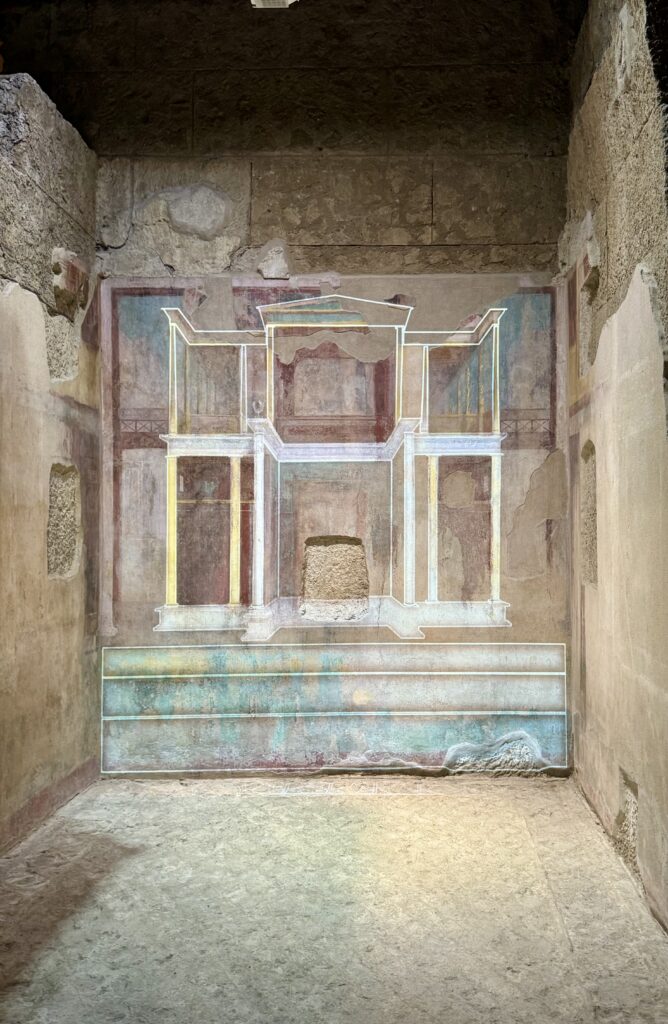
2. House of Augustus
The home of Rome’s first emperor, Augustus, is located on the most sacred area of the Palatine Hill, next to the Temple of Apollo and the Hut of Romulus.
The House of Augustus was modest by imperial standards, especially given Augustus’ enormous wealth. That was part of the image the emperor was cultivating. After civil wars, and unlike his predecessors, he didn’t want to be seen as an indulgent spendthrift.
The house is nonetheless celebrated for its lavish red Pompeian frescos form the 1st century BC.
They were first unveiled in 2014, the 2,000 year anniversary of Augustus’ death, after years of restoration. Some of them are behind glass.
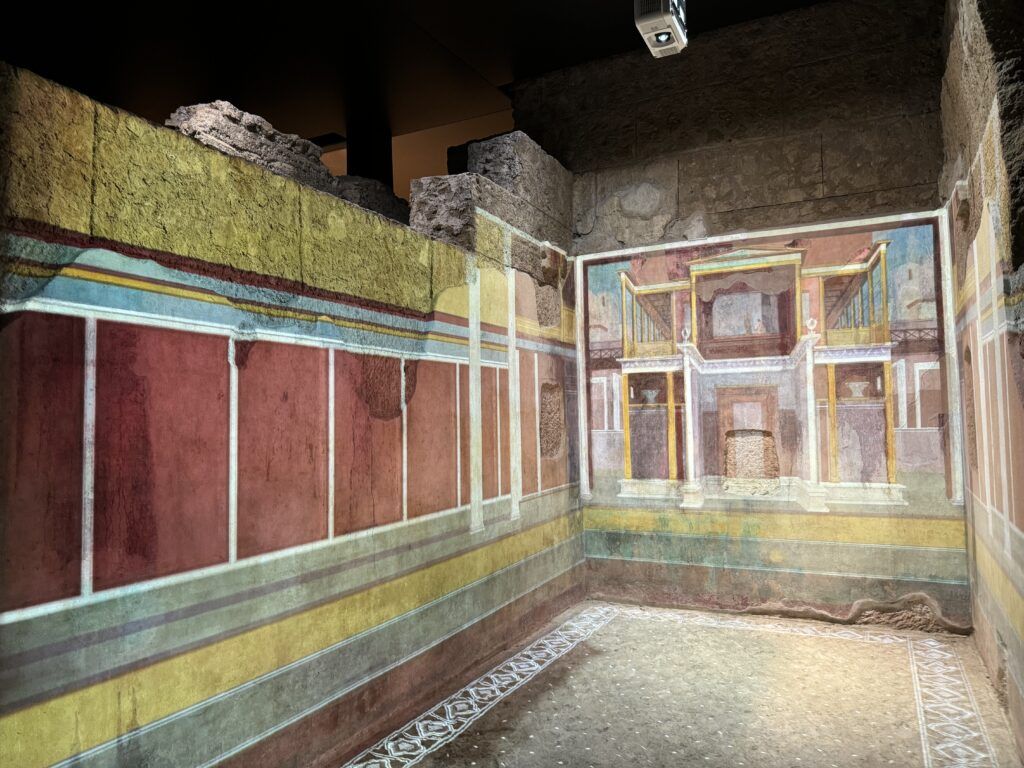
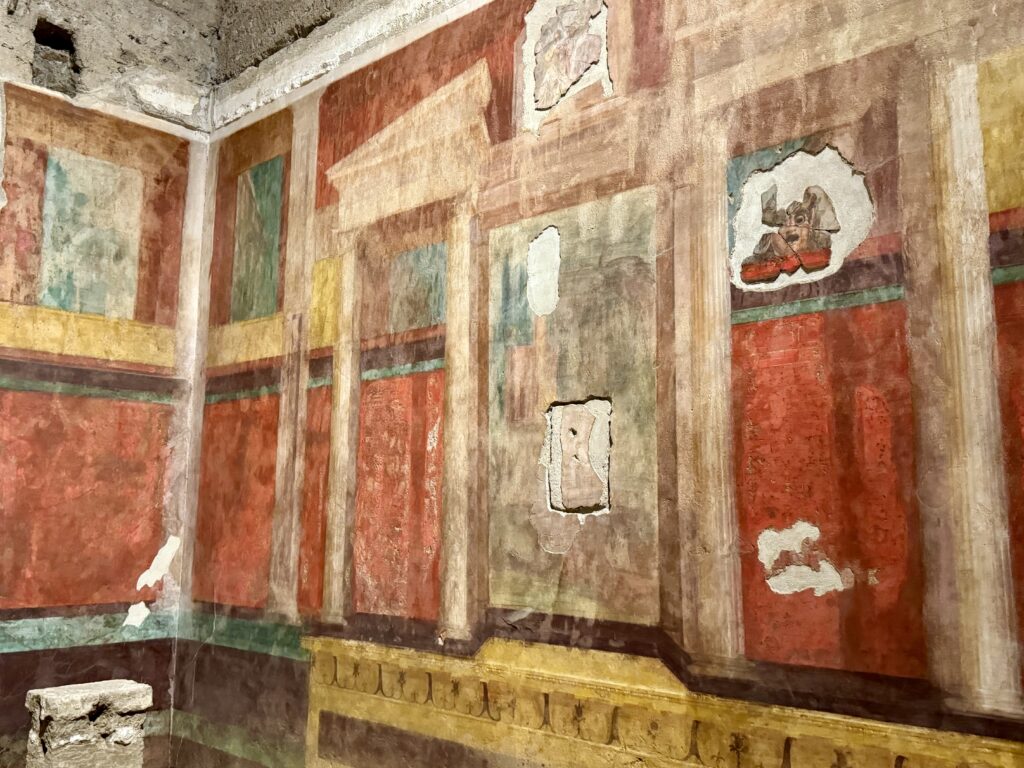
The most exquisite frescos are in the Pine Room, the Room of the Masks, and the Room of the Perspective Paintings — so named for their recurring motifs.
The western end of the house held the domestic rooms. The eastern end held the public reception rooms. By far the most elegant room is the Emperor’s Study, the studiolo, where Augustus burned the midnight oil.
Protected behind glass, the walls are beautifully decorated with stylized winged obelisks, gryphons, and floral elements. The colors are bright and bold — green, black, green, and yellow.
To get the full experience, plan to visit for one of the the 3D shows. You’ll get a 5 minute introductory narration about the site.
Then, 3D effects bring the frescos to life, filling in the missing bits and highlighting the colors and decorations. You won’t want to miss this.
They happen 3x a day at 10:30 am, 11:30 am, and 2:30 pm. You don’t have to make a reservation. Just show up 5 minutes in advance with your SUPER ticket in hand.
For more details, you can check out my complete guide to the House of Augustus.
Tip: If you don’t have a SUPER ticket, you can also visit this site on a a private guided tour. I took this tour and I have to say the archaeologist was excellent.
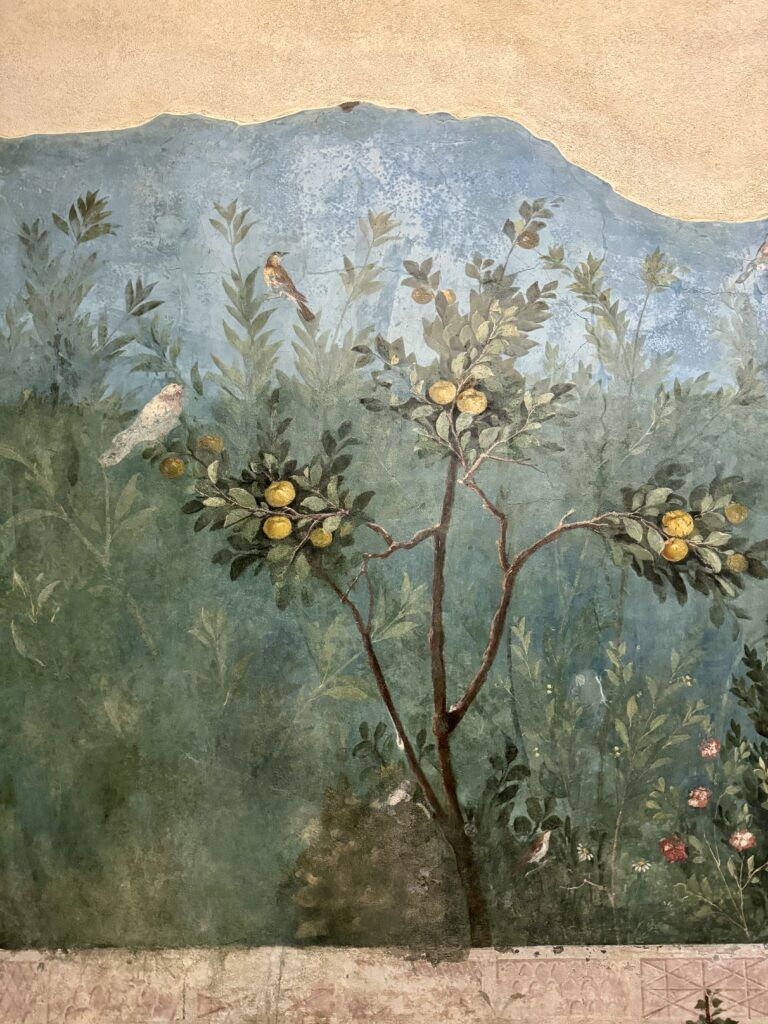
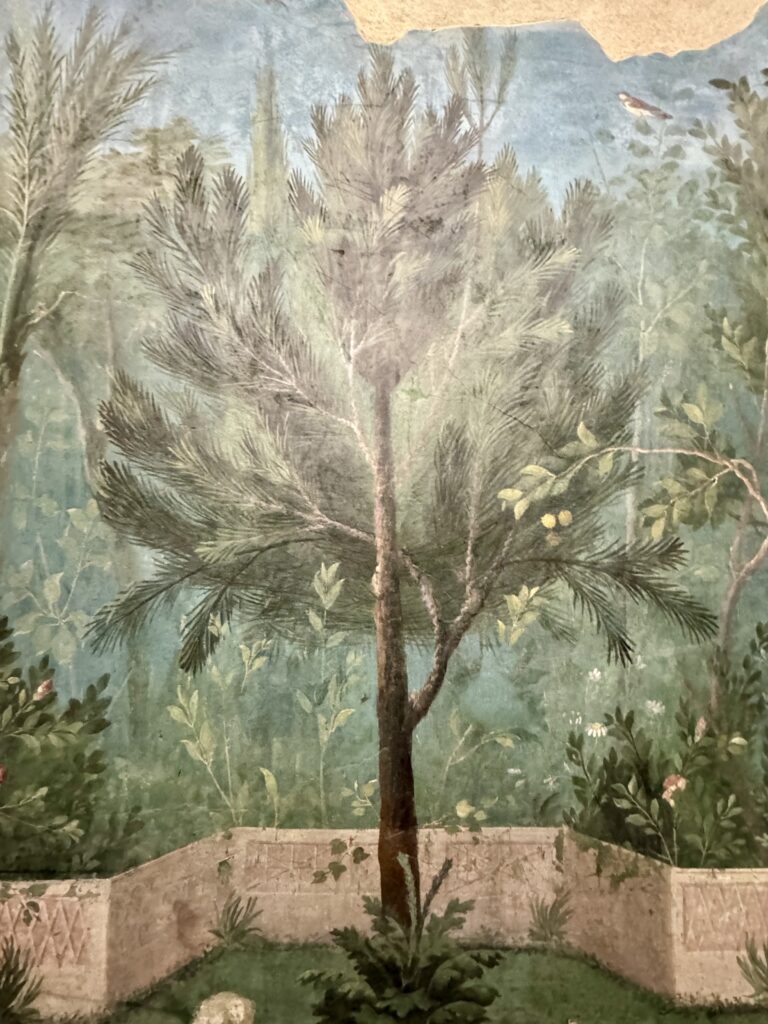
3. House of Livia
First excavated in 1839, Livia’s House was attributed to her because Livia’s honorific name was found stamped on a lead pipe. Built in the first century BC, Livia’s house was actually a bit larger and grander than her husband’s house.
The best preserved section is the atrium and three adjoining rooms.
The central room (the tablinum) was the most richly decorated. Known as the Room of Polyphemus, it had mythological frescos showing Mercury kidnapping the nymph Io.
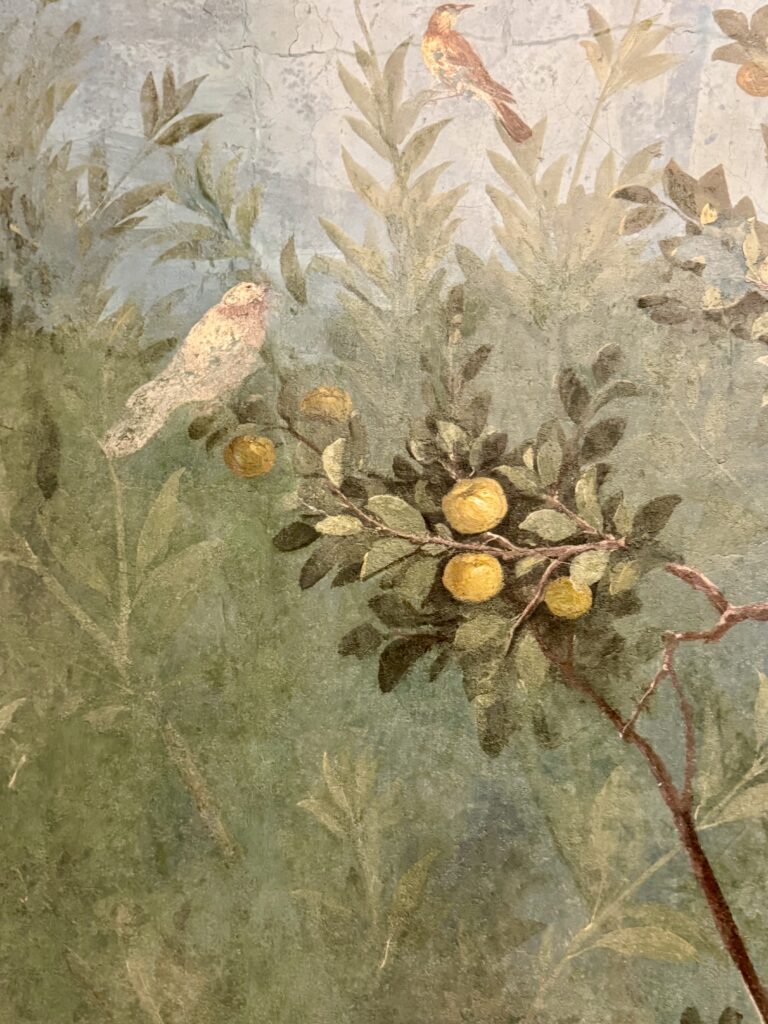
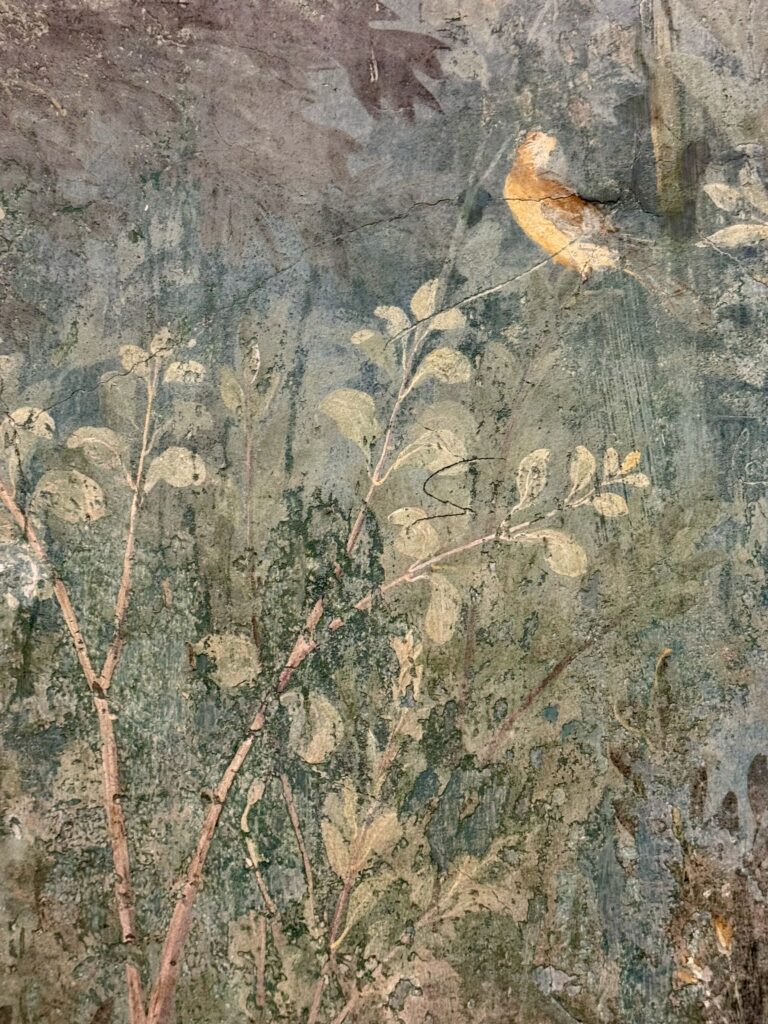
In the stunning dining room, there were gorgeous blue-green garden frescos that made the walls almost disappear. The frescos have flowering trees, blossoms, and flying birds in delicate shades of faded purple, blue, yellow, and white.
The original frescos were detached and moved to the Palazzo Massimo all Terme, which is an incredible museum. A replica is now in the House of Livia.
Right now, the house is closed. There are apparently ongoing issues with humidity, which may damage the interior. Hopefully, the site will reopen soon.
4. Aula Isiaca & Loggia Mattei
The Aula Isiaca, also known as the Isis Room, was discovered in 1912 beneath the Basilica of the Domus Flavia on Palatine Hill. It dates to the 1st century BC.
The apse chamber is decorated with frescos from around 30 BC. They depict Egyptian symbols — lotus flower, snakes, vases, etc.
The Loggia Mattei was frescoed by artist Baldassare Peruzzi in the 1520s. (Peruzzi also created frescos in another Rome hidden gem, the Villa Farnesina.)
The vault contains grotesque frescos, a style popular in the Renaissance that was copied from Nero’s Domus Aurea.
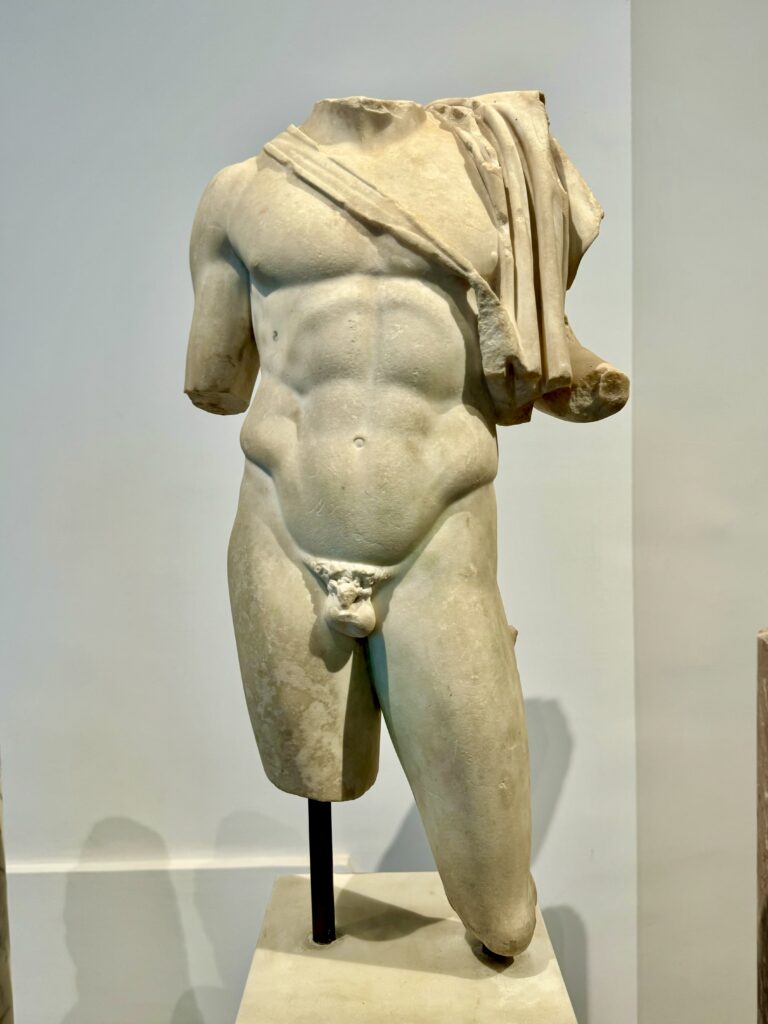
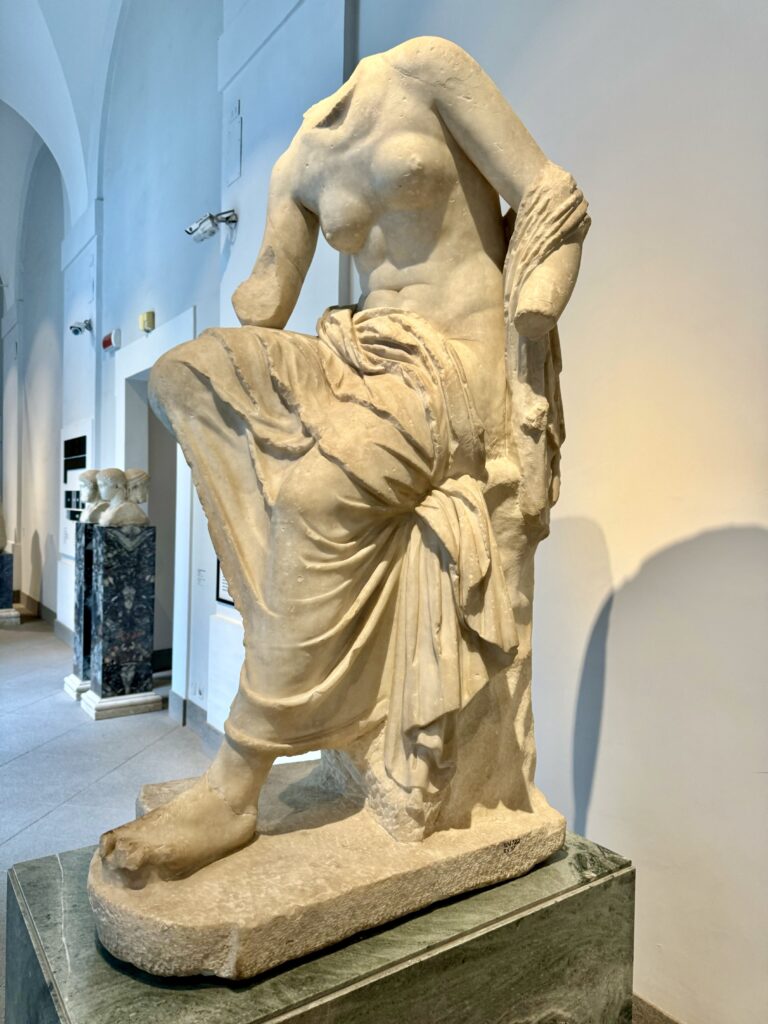
5. Palatine Museum
The Palatine Museum is a treasure trove of ancient Roman ruins. It contains a wealth of Roman artifacts discovered during excavations on Palatine Hill, from emperors’ palaces and aristocrats’ homes.
You’ll find frescos, sculptures, mosaics, and other ancient objects. If you’re a history buff, the Palatine Museum is a must visit site.
There’s a gorgeous 5th century BC Greek sculpture — rare! Another of my favorite pieces was a rare bust of Emperor Nero.
After the great fire, all likenesses of Nero were destroyed by decree. This bust is one of the few surviving relics of his time.
There’s also an interesting reconstruction of the Huts of Romulus, where Rome’s founder Romulus once lived.
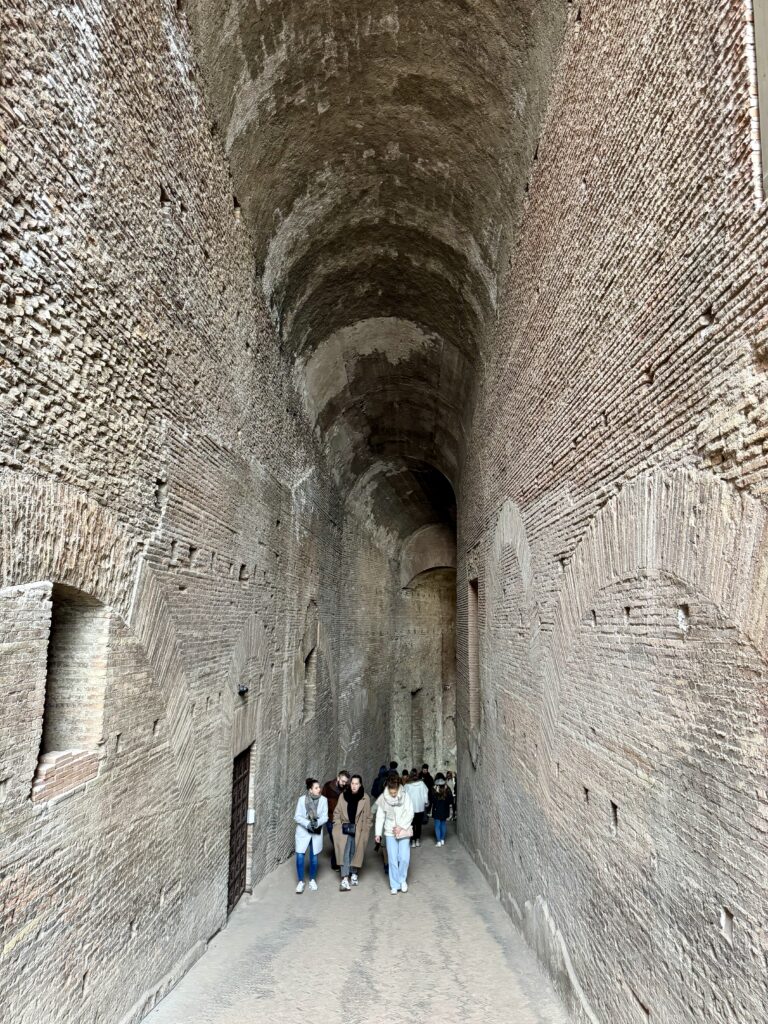
6. Neronian Cryptoporticus
Nero built the Cryptoporticus to connect Domus Aurea with the other imperial palaces on Palatine Hill. It’s an underground corridor that was 400 feet long.
It allowed the imperial entourage to travel in privacy and splendor to their palaces. The tunnel was once decorated with elaborate stucco decorations. Traces of them are still visible.
The Neronian Cryptoporticus was also the scene of imperial murder. According to the historian Seutonius, this is where the Praetorian Guard assassinated the infamous Emperor Caligula in 41 AD. Like Julius Caesar, he was stabbed many times by a group of conspirators.
Now, you can walk along the 2000 year old passage, just like the emperors did.
You enter the cryptoporticus after visiting the Church of Santa Maria Maria Antiqua in the forum and it will deposit you on a hilltop terrace on Palatine Hill.
7. Temple of Romulus
The origin of the Temple of Romulus has been the subject of conjecture. Most historians think that Emperor Maxentius used it as a temple for his son Valerius Romulus, who died at age 4 in 309 and was deified.
The temple’s original bronze door is decorated with two porphyry columns — a marble so rare that it’s almost extinct. Inside, the temple has several cycles of frescoes.
There’s also a funerary tabernacle with a madonna and child. And exhibits on the “grand tours” from the 19th century.
Right now, until April 2024, the temple is free to visit. Though you should expect to wait in line to see the frescos. After that, it will be on the Super ticket route.
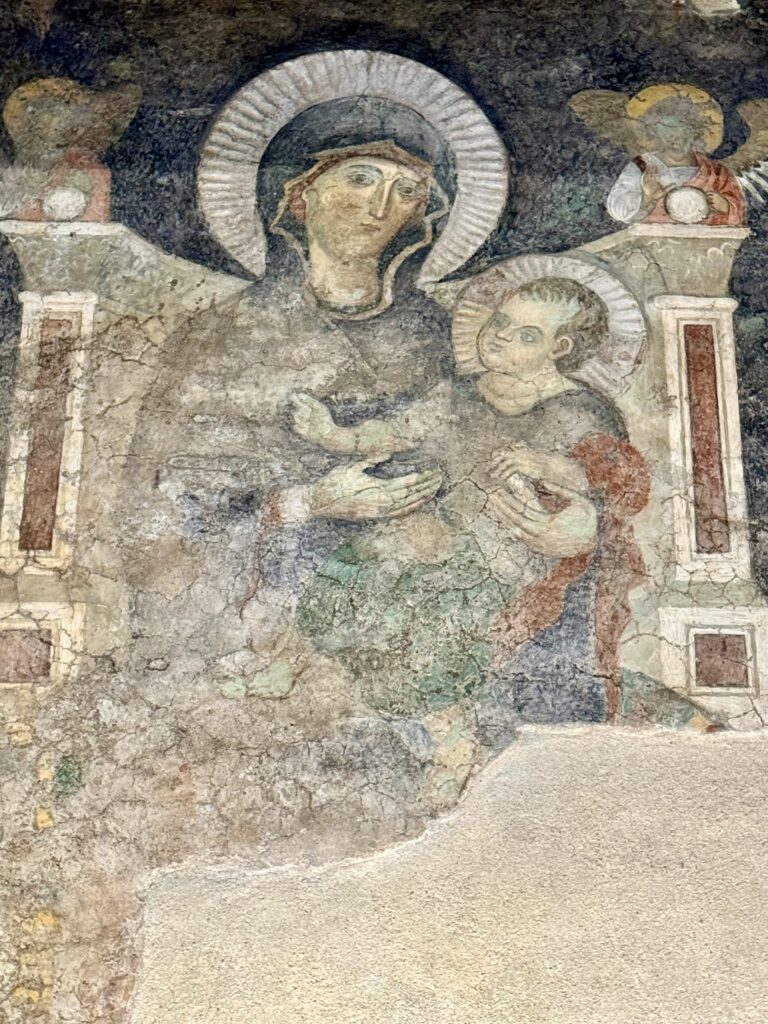
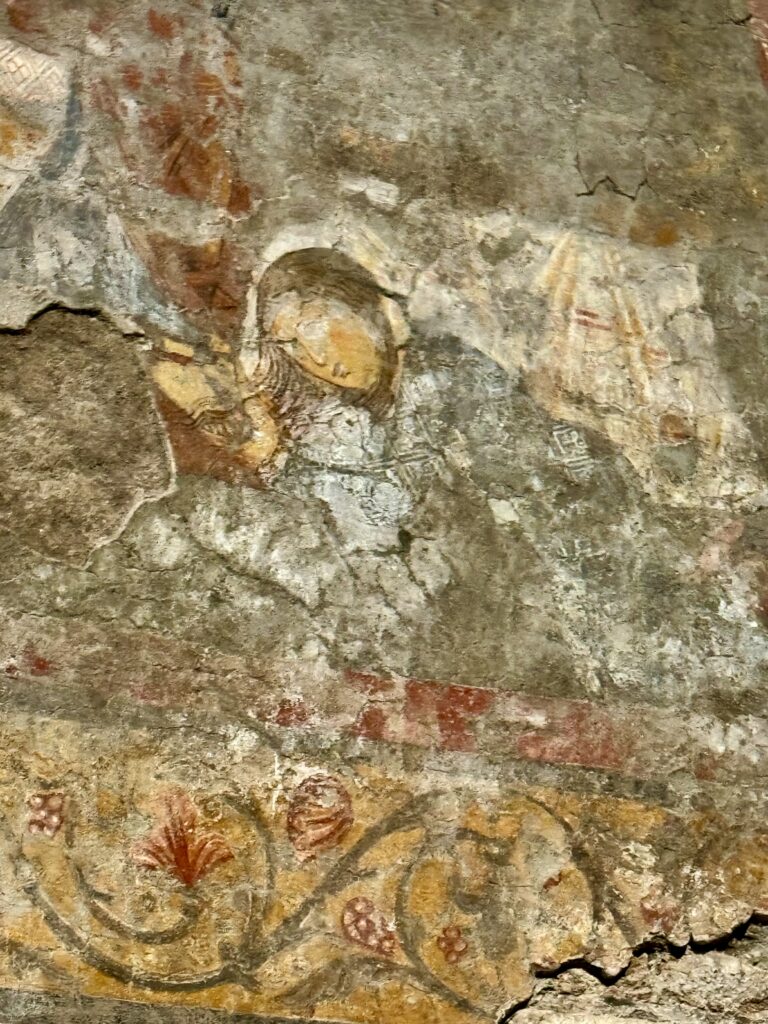
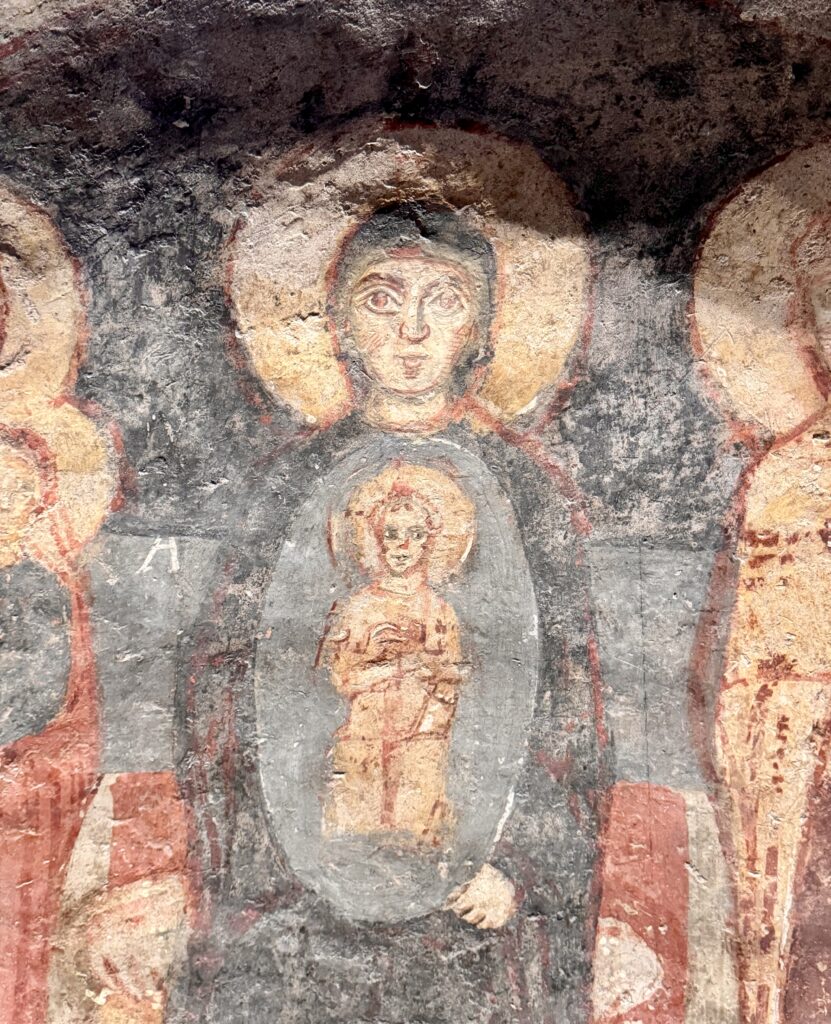
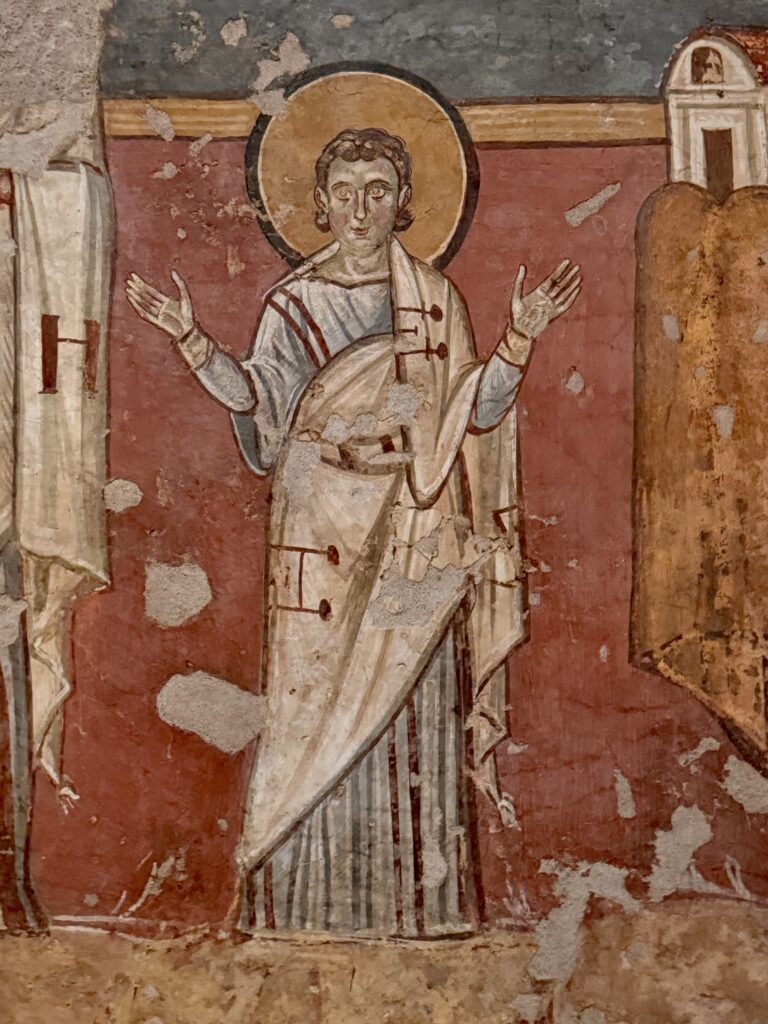
8. Santa Maria Antiqua
Santa Maria Antiqua is one of the earliest surviving Christian churches in Rome. The Byzantine church was discovered in 1900.
It was built within a 1st century AD Roman structure. The church has a wealth of frescos from the 6th to 9th centuries depicting the Virgin Mary. It’s considered the Sistine Chapel of the medieval era.
During a 9th century earthquake, the church was buried in rubble. It was sealed from the world for over 1000 years. This fate might have saved the precious works from a subsequent Baroque redo.
After years of conservation, the church opened to the public in 2015. There are 3D effects in several rooms. Others are dark, but the lights turn on every few minutes.
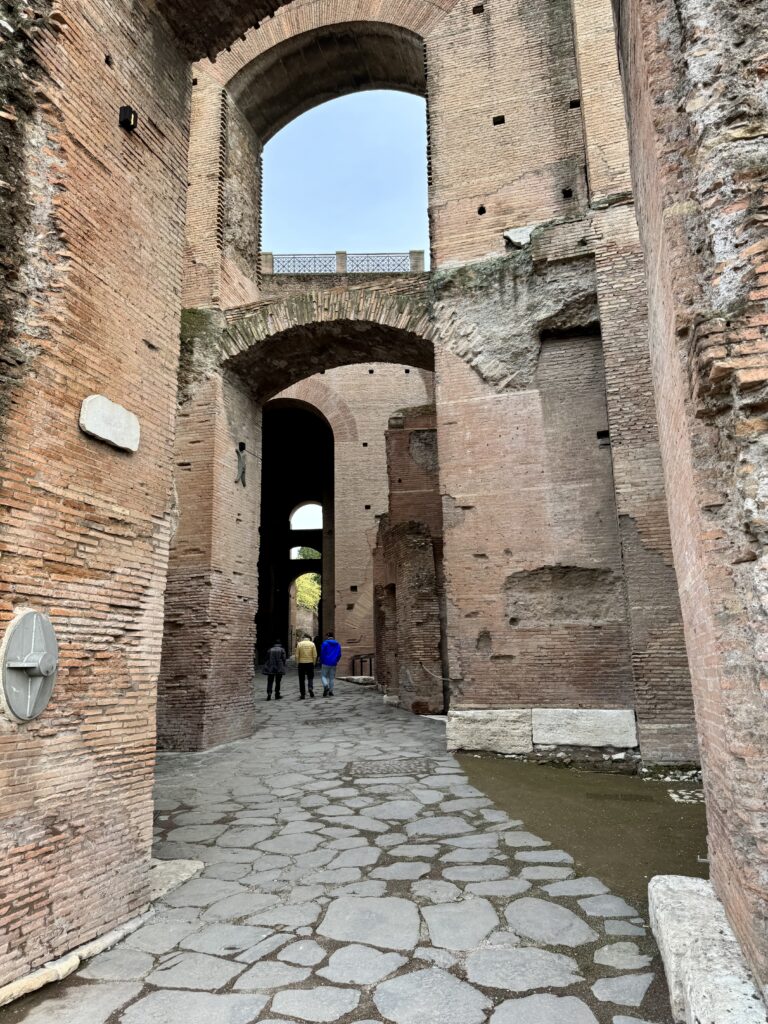
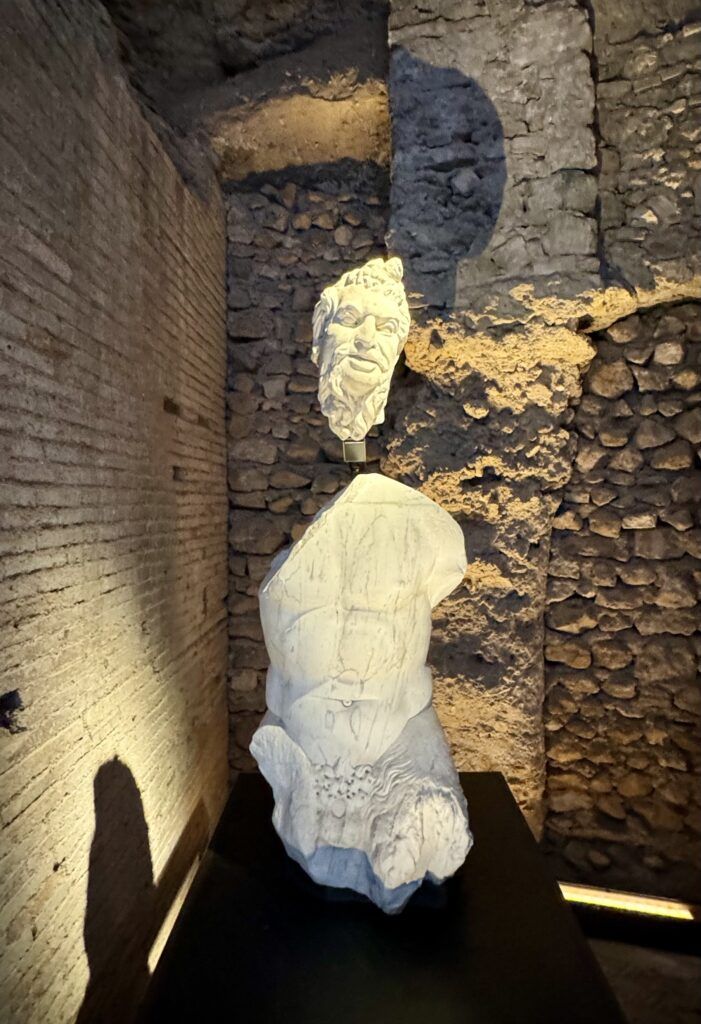
9. Domus Tiberiana
Last, but certainly not least, is the 2,000 year old Domus Tiberiana. This is the massive building you see in the forum behind the House of the Vestal Virgins with arches.
For 50 years, it’s been an archaeological site. In September 2023, Domus Tiberiana opened to the public. I got to see it on my visit in December — thrilling!
Although it’s named after Emperor Tiberius, archaeological studies show that foundations date from the later reign of Nero, who ruled from 54 AD to 68 AD.
The palace was home to many rulers, really a “power palace par excellence.” Besides being the emperor’s residence, it included gardens, places of worship, and a district for workers.
In addition to striding down the gigantic hallways, you can admire a nice selection of artifacts that were found during digs. Along the way, you’ll have beautiful views over the forum.
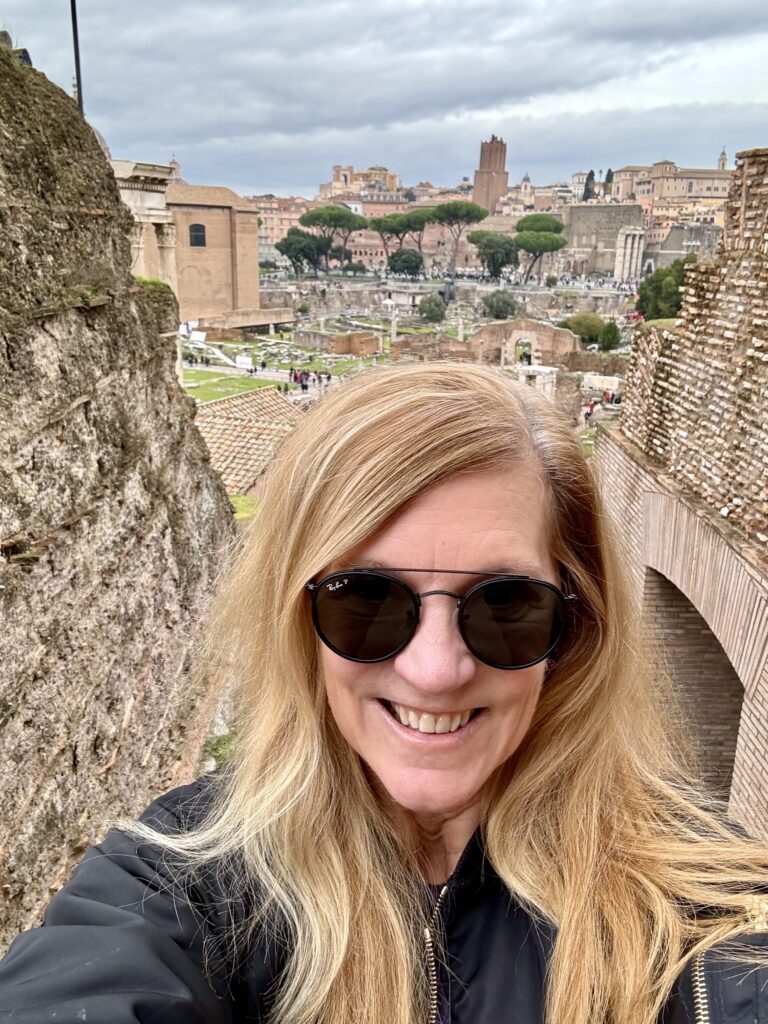
I hope you’ve enjoyed my guide to Rome’s SUPER ticket. You may enjoy these other Rome travel guides and resources:
- 8 ways to spend 1 day in Rome
- 3 day itinerary for Rome
- 5 day itinerary for Rome
- Best museums in Rome
- Hidden gems in Rome
- Archaeological sites in Rome
- Guide to the Borghese Gallery
- Guide to Palatine Hill
- Guide to the Roman Forum
- Guide to the Colosseum
If you’d like to visit the unique SUPER ticket attractions in Rome, pin it for later.

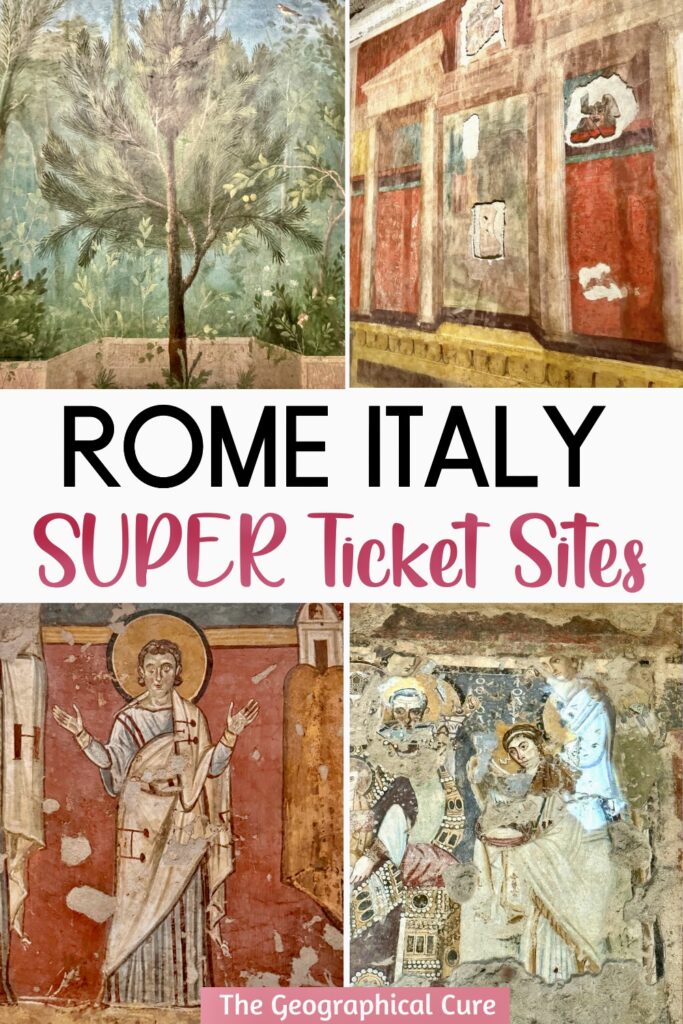
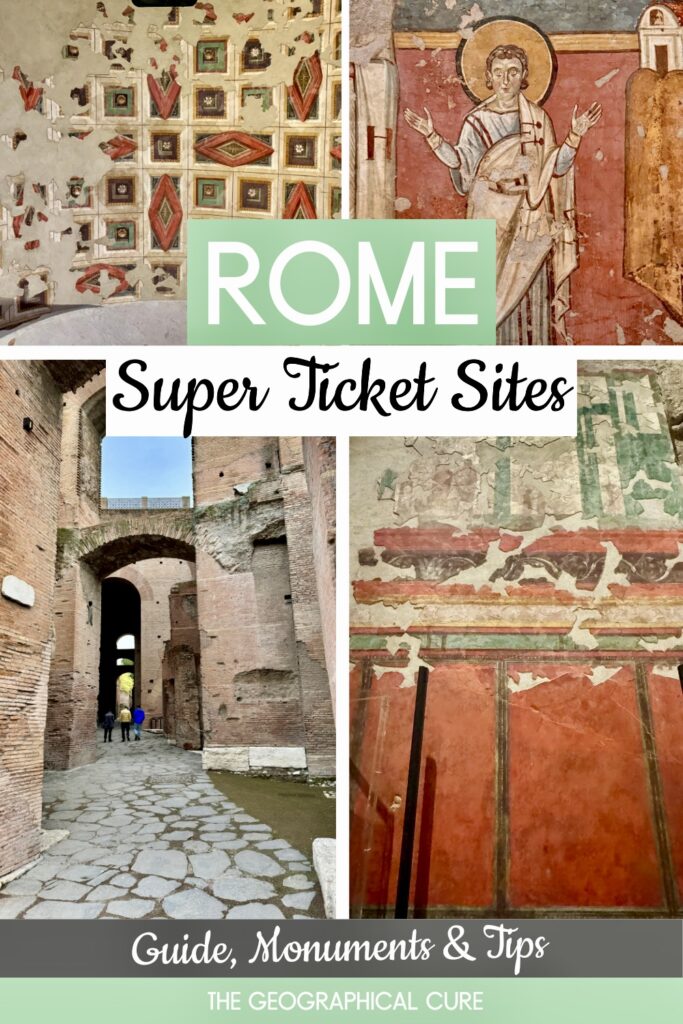
Writing in the year 2022 here -this may have changed?? For my life I cannot find where ot make reservations for the 3 sites that require a reservation. I can only purchase the tickets and select the time at which I want to enter the Colosseum. I´m going nuts 🙁
You can purchase a S.U.P.E.R. Pass here: https://parcocolosseo.it/en/s-u-p-e-r/
Do you mind me asking- did you find a solution? I’m trying to make reservations too– like you said there is no place to do it after clicking buy now on the super ticket… I was really hoping to see the House of Augustus
Are you using this link? I’m able to put it in my cart. https://www.coopculture.it/en/products/forum-pass-super-ticket-with-access-to-the-roman-forum-palatine-and-imperial-forum/
You need to update this- you no longer book online for the SUPER SITE sites
Thanks. I see it’s part of your forum ticket now, but access may be restricted.
I had the same problem: I could not find where to make a reservation… I called them and apparently you don’t need a reservation anymore.
This page isnt worka from 2 Days. I have quastions how this super pass work with Roma pass ? I see on coopcultura tickett Full Experienze with Colosseum and object superpass. Can I get this with Roma Pass an have this gratis like 1 place in Rom Pass ?
Sorry for the delay in responding. I’ve been in Italy. You can visit the SUPER Pass sites with the Roma Pass as long as it’s not a second entry to the site. Here is some information on doing this: https://www.romewise.com/roma-pass.html#roma-pass-sites-included
Dear Leslie, traveling to Rome in Nov. Hoping to go to the Forum and Palatine Hill. If I buy the SuperPass, and get the timed entry for the 3 sites you recommended….and then it rains can I use the SuperPass for other things (museums/Churches). I think I can but I wanted to confirm with you first. Thanks, Crystal
No, the SUPER Pass is only valid for the specific sites listed. You would have to buy skip the tickets or a Roma Pass for the other attractions. But many of the churches are free to enter.
Leslie, do I buy a SuperPass first then afterwards make a reservation for the buildings at the Forum? Buying a SuperPass is no problem, but there is no information enabling you to make a timed entry to the sites at the Forum on the SuperPass website. This is the site I visited – https://www.coopculture.it/en/products/forum-pass-super-ticket-with-access-to-the-roman-forum-palatine-and-imperial-forum/
Can you assist? Crystal
I think you just show up for the other sites, which won’t be crowded.
Hi, is the option 2 (6 euro add on) still available somewhere? I don’t see it on the Coop page. If not, is it possible to bur Colosseum skip the line entry without Palantine/Forum Romanum? https://parcocolosseo.it/ doesn’t work, is there an alternative? Are all the sites selling tickets to these sites legit or should I use only particular ones? thanks
They seem to have eliminated it at the moment.